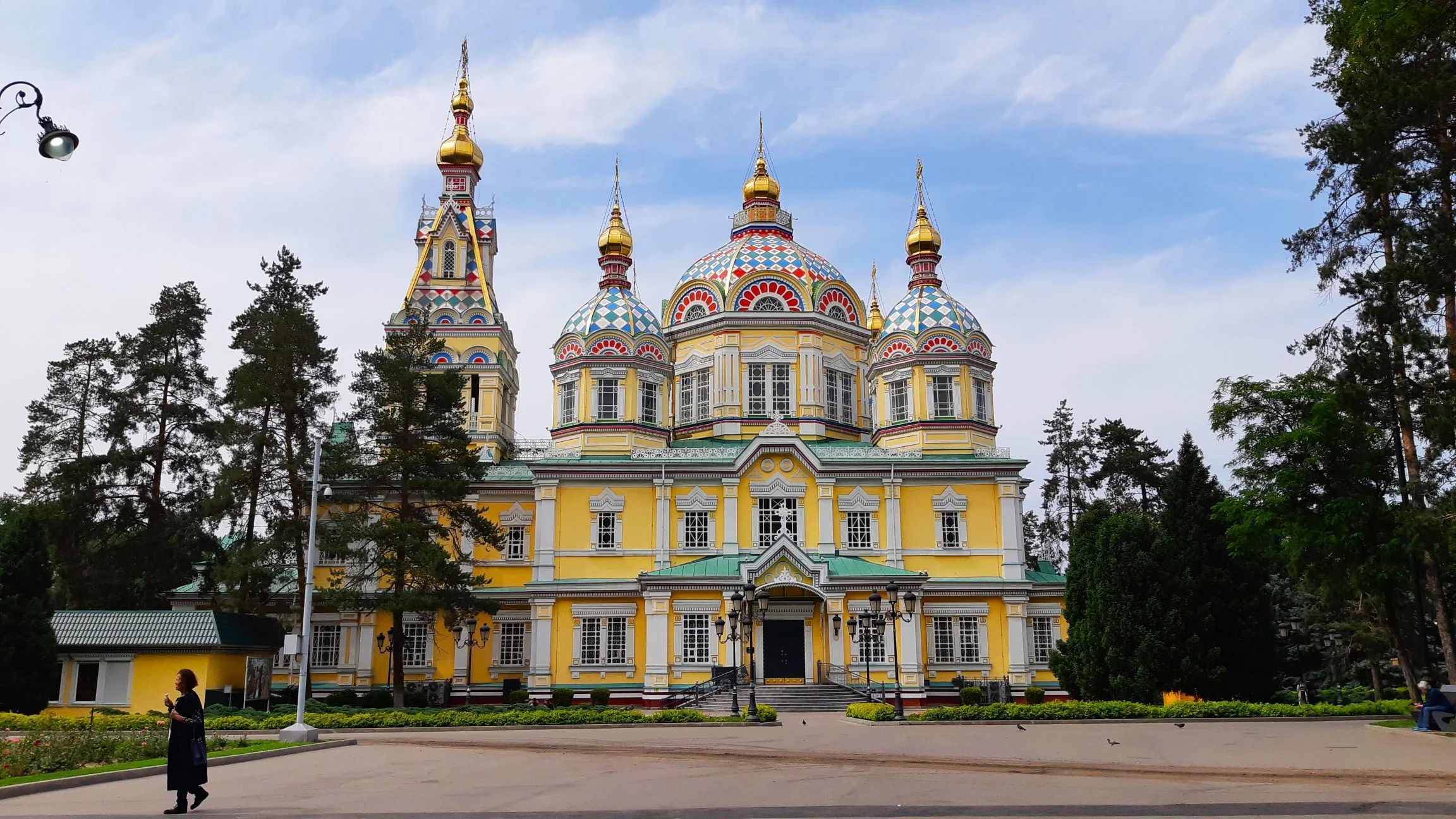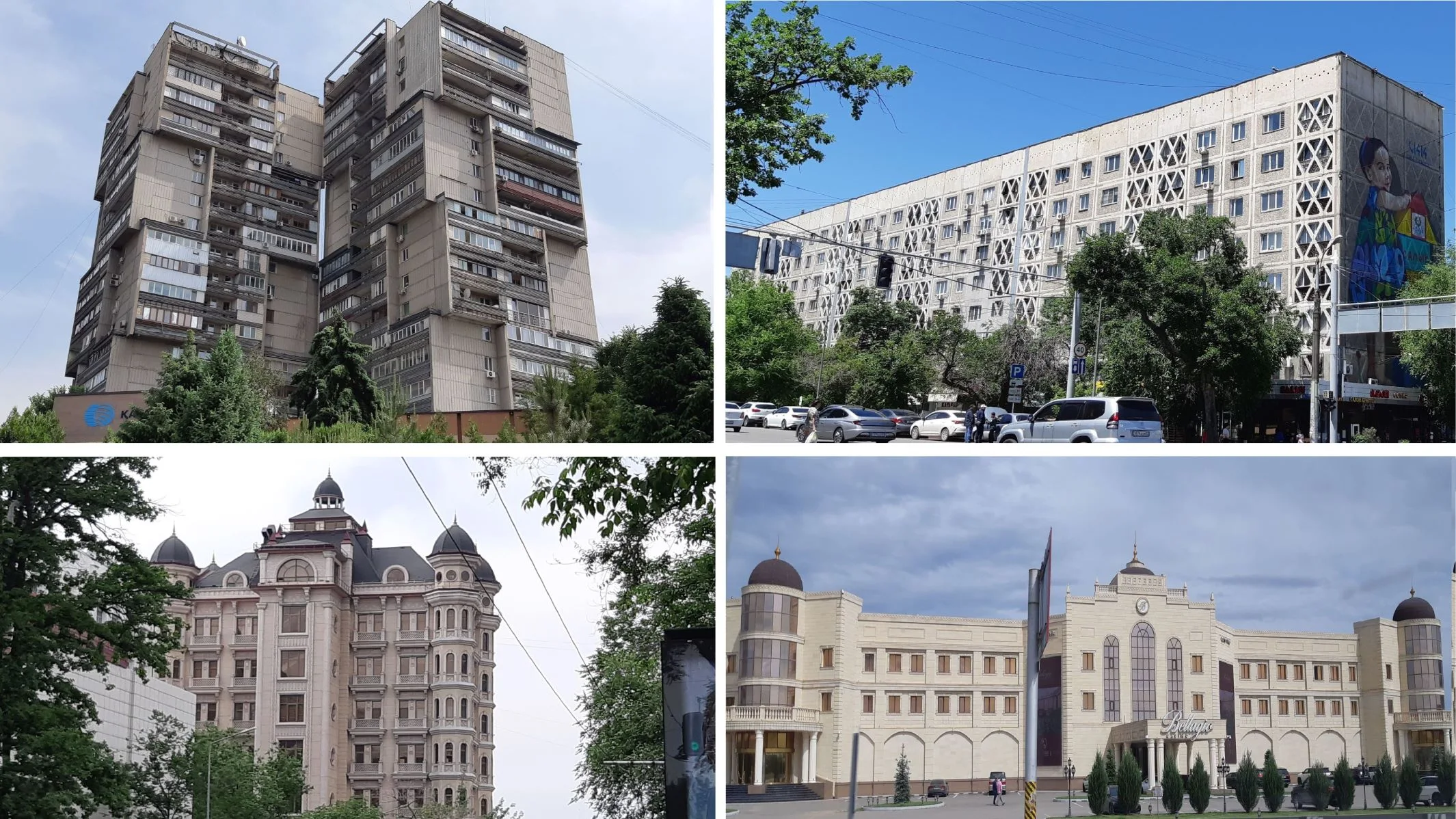Our travels this year, have taken us into Central Asia to explore the historic Silk Road. Our most recent stop on that route was in Kyrgyzstan’s characterful town of Karakol. Leaving there, we travelled north to cross the border into Kazakhstan. We’d hired a car and driver to get us there, and the scenery along the drive was beautiful.
The Republic of Kazakhstan is the biggest country in Central Asia. It covers almost 2.8 mil sq km bound east to west by China and the Caspian Sea, and north to south by Russia and Kyrgyzstan. It has been ruled by Mongols, nomadic societies, and Russians until declaring independence in 1991. Now-days, it is a predominately Islamic country of over 20 million people of which two-thirds are Kazak, and under one-third Russian, with a smattering of others.
Our drive took us through very remote areas of Kazakhstan close to the border with China, and the Silk Road would have passed through these parts. Now days, the area is mostly used for grazing sheep and goats, and growing crops. At one point we spotted a small boy on his donkey, herding a few sheep while eating his orange popsicle. Dad was nearby herding the main flock.
The first main stop on our drive was at the Charyn Canyon, a UNESCO site touted as the Central Asia version of the American Grand Canyon. We’re not sure about that comparison, but it was unusual. This 150 to 300-m-deep canyon was gouged out by the Charyn River around 12 million years ago, leaving in its wake, large colourful rocks that natural erosion has formed into amazing shapes.
It looked interesting from the top, so we went down to the canyon floor for a walk. The rock formations were other-worldly and huge, easily dwarfing us. After around 90 minutes we reached the end of the walk, which was all downhill. But to avoid walking the uphill return journey, we caught the shuttle truck back to the top of the canyon. At the top, we enjoyed a lunch of horse-meat pâté on toast at the canyon café.
 |
| Our yurt in Basshi village, entrance to the Altyn-Emel National Park (UNESCO), Kazakhstan |
Our next stop was the village of Basshi, a tiny dot in the eastern area of Kazakhstan that provides the entrance to the Altyn-Emel National Park. This huge park is around 4,600 sq km of rocky and sandy desert that is a UNESCO Biosphere Reserve. We stayed one night in Basshi in a yurt, and although it rained overnight, we were cozy, dry, and warm sleeping on sheepskins on the ground.
The next morning, we visited the park with a highlight being the ‘Singing Sand Dune’, a 1.5 km long, 120 m high sand dune that hums in the wind. The cause of the singing or humming still has scientists scratching their heads. Not concerned about the science of it, we wanted to climb it, so off we went. Marg made great strides but Leigh didn’t! As for the singing…..well rain the previous night had put the clappers on that as the sand was wet and it only sings when its dry. Aah well.
 |
| Scenery on the Great Steppe of Kazakhstan |
Leaving Basshi and the park, we drove west toward the city of Almaty. The drive was straight forward with the road being a mix of good and very bad. The scenery was a mix too, showing stony desert, colourful wildflowers and windswept plains. The vast area we were crossing is part of the Great Steppe of Kazakhstan, a huge tract of land that covers almost one-third of the country, and is the largest dry steppe in the world at 804,500 sq. km.
We eventually arrived in Almaty. This city dates back to the 1000–900 BC, and by the 10–14th centuries, had developed into a significant trade centre along the Silk Road. Now days, it is a large urban centre with a population of over 2 million. We were staying in an apartment in Almaty, but cringed when we saw it was in a run-down Soviet building. However, we needn’t have worried, as the owners had renovated it to European standards, and it had a great view of the Alatau Mountains.
 |
| Arbat and Panfilov promenade, Almaty, Kazakhstan |
The apartment was in the heart of Almaty, making it really easy to walk around the city. So, we set out for a sightseeing walk the next morning using the 2 km pedestrian walkway known as Arbat and Panfilov Street Promenade. It was vibrant and lively, and lined with shops, fountains, eateries, parks, and areas for street artists. A great place for walking.
 |
| Ascension Cathedral, Almaty, Kazakhstan |
At the end of the promenade, we found Panfilov Park which is home to a beautiful Russian Orthodox church called Ascension Cathedral. Built in 1907, the cathedral is a colourfully painted wooden structure that looks beautiful in the park, and is equally as beautiful inside. It is 56 meters tall, and amazingly, has been built without using nails.
Walking on, we found Almaty has a really interesting mix of architectural styles. One of these is the Soviet modernism style from the USSR days. There were also many soviet-style apartments, European gothic-style buildings, and more simple structures uniquely Central Asian. We also found many greenspaces, and we were able to walk in the shade of the many large street trees in the 26+ degree heat.
The next day, we visited the local bazaar. It is a covered market on a very large site divided into zones to keep all similar products in the same area. The meat section was even divided into meat types, such as beef, lamb, chicken and horse. We loved the colour in the fruit area and bought an avocado, blueberries and strawberries. But we were so delighted with our purchases that we forgot to bargain (as is expected here), and ended up paying the equivalent of NZ$17 for them. Ouch!
We liked Almaty and found it to be a sophisticated, diverse and dynamic city. However, when we went to update our blog, we found that our blog provider is one of the websites that the Kazakhstan government blocks, so we could not write any blogs while in Kazakhstan. On the bright side, when it was time to leave Almaty, the apartment owner came to collect the keys, and even though it was almost 10:00 pm, he kindly drove us to the train station for our overnight train to Taraz - Taraz is in the next blog.
This blog is one in a series about our travels along the Silk Road of Central Asia.
-us%20on%20the%20road-a.jpg)
-boy%20n%20donkey-a.jpg)






